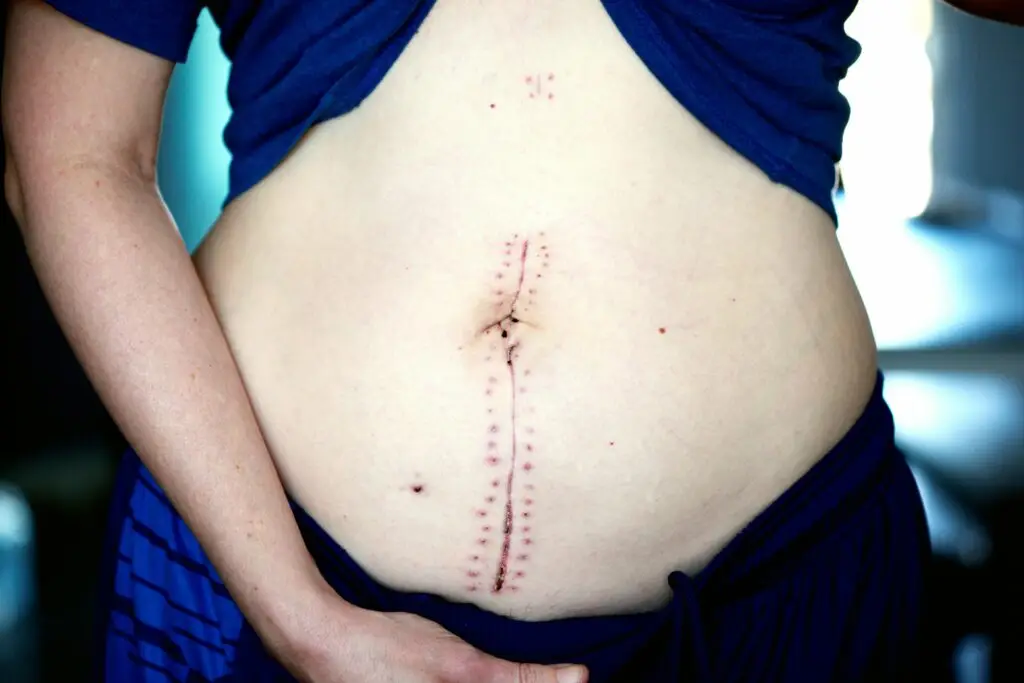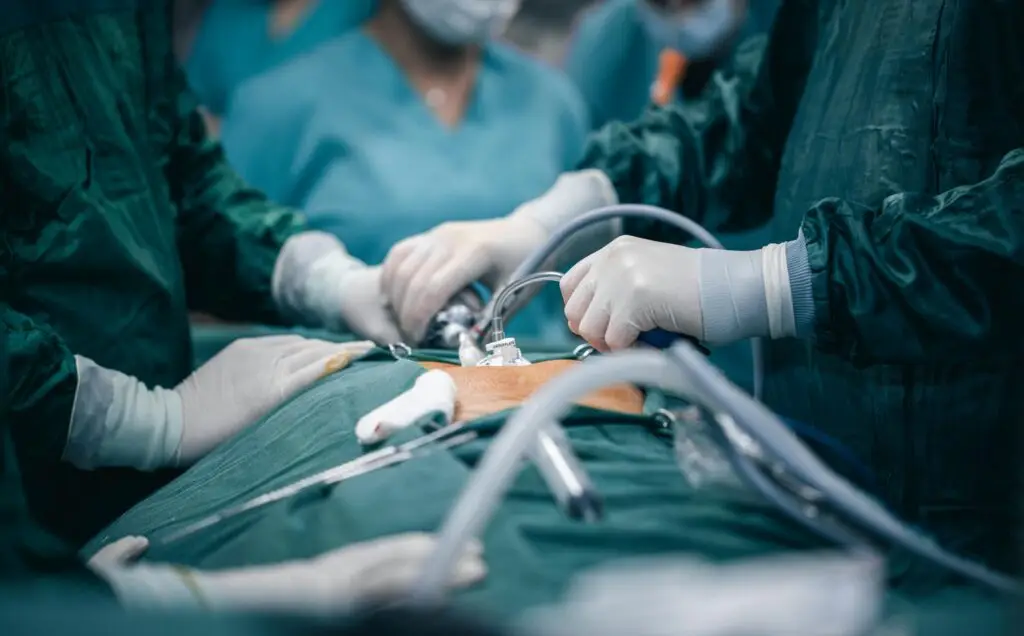The biliary system consists of the bile ducts, gallbladder, and associated vascular structures. Anatomic variations are common, occurring in up to 30% of patients, making a thorough understanding of both normal anatomy and its variations essential for managing biliary diseases.
Anatomy Of Biliary System:
1. Bile Ducts
1.1 Intrahepatic and Extrahepatic Bile Ducts
- Bile ducts, whether intrahepatic or extrahepatic, lie superior to the corresponding portal vein.
- The portal vein is lateral and inferior to the arterial supply.
Left Hepatic Duct
- Retains a longer transverse extrahepatic portion.
- Travels under the edge of segment IV before joining the bifurcation.
- Receives a few subsegmental branches from segment IV in its transverse portion.
- Drains liver segments I, II, III, and IV:
- The most distal branch drains segment IVA.
- Further superolaterally, ducts drain segment IVB.
- Further up, ducts drain segments II and III, located just posterior and lateral to the umbilical recess.
Right Hepatic Duct
- Drains liver segments V, VI, VII, and VIII.
- Substantially shorter than the left hepatic duct, bifurcating almost immediately.
- Formed by the junction of two sectoral ducts:
- Anterior sectoral duct: Runs vertically, draining segments V and VIII.
- Posterior sectoral duct: Runs horizontally, draining segments VI and VII.
Caudate Lobe Drainage
- Drained by smaller ducts that enter both the right and left hepatic duct systems.
2. Gallbladder
The gallbladder is a partially intraperitoneal structure attached to the undersurface of the liver on segments IVB and V.
| Feature | Description |
|---|---|
| Length | 7–10 cm |
| Capacity | 30–60 mL |
| Divisions | Neck, infundibulum (with Hartmann pouch), body, and fundus |
| Cystic Plate | Fibrous lining on the side attached to the liver, lacking peritoneal covering |
| Cystic Duct | 1–5 cm in length, drains into the common bile duct (CBD) |
| Valves of Heister | Spiral mucosal folds in the cystic duct that retain bile |
2.1 Cystic Duct
- Length ranges from 1 to 5 cm.
- Drains at an acute angle into the CBD.
- Numerous variations in insertion, including into the right hepatic duct.
- Contains valves of Heister, which are spiral mucosal folds that help retain bile in the gallbladder.
3. Common Bile Duct (CBD)
The CBD is divided into three portions:
- Supraduodenal: Above the duodenum.
- Retroduodenal: Behind the duodenum.
- Pancreatic: Encompassed by the head of the pancreas.
- The insertion of the cystic duct marks the separation of the CBD (below) from the common hepatic duct (above).
- The CBD ends at the ampulla of Vater in the second portion of the duodenum.
- The pancreatic duct joins the CBD at the ampulla, though variations exist where they may have separate orifices.
4. Vascular Anatomy
4.1 Hepatic Segments
- The liver is divided into lobes and segments as described by Couinaud.
- Each segment has its own vascular inflow, outflow, and biliary drainage.
4.2 Blood Supply to the Biliary Tree
- The biliary tree is solely supplied by arterial blood, unlike the hepatic parenchyma, which has dual perfusion from the portal vein and hepatic artery.
- This makes the biliary tree susceptible to ischemic injury.
Cystic Artery
- Normally arises from the right hepatic artery.
- Variations include origins from the left hepatic, proper hepatic, common hepatic, gastroduodenal, or superior mesenteric arteries.
- Passes posterior or anterior to the CBD to supply the gallbladder.
- Lies superior to the cystic duct and is associated with a lymph node known as the Calot node.
Blood Supply to the Common Hepatic Duct and CBD
- Supplied by the right hepatic and cystic arteries.
- The right hepatic artery typically passes posterior to the common hepatic duct.
- In 20% of cases, an accessory or replaced right hepatic artery passes through the portacaval space and ascends along the lateral aspect of the CBD.
Perfusion to the Inferior Bile Duct
- Supplied by tributaries of the posterosuperior pancreaticoduodenal and gastroduodenal arteries.
- Small branches coalesce to form two vessels running along the CBD at the 3- and 9-o’clock positions.
5. Lymphatic Drainage
- The gallbladder’s lymphatic vessels drain into the cystic lymph node of Lund (sentinel lymph node), located at the junction of the cystic and common hepatic ducts.
- Efferent vessels from this node drain into the hilum of the liver and coeliac lymph nodes.
- Subserosal lymphatic vessels of the gallbladder connect with the subcapsular lymph channels of the liver, facilitating the spread of gallbladder carcinoma to the liver.
6. Surgical Anatomy
6.1 Triangle of Calot
- Bordered by:
- Cystic duct (inferiorly).
- Common hepatic duct (medially).
- Inferior surface of the liver (superiorly).
- Contains the cystic artery and is a critical landmark during cholecystectomy.
6.2 Hilar Plate
- An extension of Glisson’s capsule.
- No vascular structures overlie the bile ducts at this location, allowing exposure of the proximal extrahepatic biliary tree by incising the base of segment IV and lifting the liver.
7. Anatomic Variations
7.1 Cystic Duct Insertion
- May join the right hepatic duct or a right hepatic sectoral duct.
- Variations in the level of insertion (e.g., retroduodenal or retropancreatic).
7.2 Cystic Artery
- Variations in origin and course, including:
- Arising from the left hepatic, proper hepatic, or gastroduodenal arteries.
- Passing anterior to the common hepatic duct.
7.3 Right Hepatic Artery
- In 20% of cases, an accessory or replaced right hepatic artery passes through the portacaval space and ascends along the lateral aspect of the CBD.
8. Summary of Anatomic Details
The biliary system’s anatomy is complex, with significant variations in the structure and course of the bile ducts, gallbladder, and associated vasculature. Key structures include:
- Left and right hepatic ducts with their segmental branches.
- Gallbladder with its divisions and cystic duct.
- Common bile duct divided into supraduodenal, retroduodenal, and pancreatic portions.
- Cystic artery and its variations.
- Triangle of Calot and hilar plate as critical surgical landmarks.
Physiology of the Biliary System
The physiology of the biliary system involves the production, storage, concentration, and secretion of bile, as well as its role in digestion and excretion. Below is a detailed explanation based on the provided text from both books.
1. Bile Production and Secretion
1.1 Hepatic Lobule
- The hepatic lobule is the smallest functional unit of the liver.
- It consists of 4–6 portal triads and is identified by a central terminal hepatic venule.
- Each hepatocyte is surrounded by bile canaliculi, which coalesce to form small bile ducts that enter the portal triad.
1.2 Bile Components
- Bile is composed of:
- Bile salts (e.g., cholic acid, deoxycholic acid).
- Phospholipids.
- Cholesterol.
- Bilirubin (a breakdown product of hemoglobin and myoglobin).
- Bile salts are synthesized from cholesterol and secreted into the bile canaliculi.
1.3 Enterohepatic Circulation
- Bile salts are recycled through the enterohepatic circulation:
- After aiding in fat digestion, bile salts are reabsorbed in the terminal ileum.
- They are transported back to the liver via the portal vein.
- The liver reuses these bile salts, reducing the need for de novo synthesis.
- Less than 5% of bile salts are lost daily in the stool.
2. Functions of the Gallbladder
The gallbladder serves three primary functions:
2.1 Reservoir for Bile
- Stores bile produced by the liver during fasting.
- When the sphincter of Oddi is closed, bile is diverted into the gallbladder.
2.2 Concentration of Bile
- The gallbladder absorbs water, sodium chloride, and bicarbonate from bile.
- This concentrates bile 5–10 times, increasing the concentration of bile salts, bile pigments, cholesterol, and calcium.
2.3 Secretion of Mucus
- The gallbladder secretes approximately 20 mL of mucus per day.
- Mucus protects the gallbladder lining from the detergent activity of bile.
3. Regulation of Bile Flow
3.1 Role of Hormones
- Cholecystokinin (CCK):
- Secreted by the duodenal mucosa in response to fat, protein, and acid in the duodenum.
- Stimulates gallbladder contraction and relaxation of the sphincter of Oddi.
- Causes intraluminal pressures in the gallbladder to reach up to 300 mm Hg.
- Secretin:
- Stimulates bile secretion by the liver.
3.2 Neural Regulation
- Vagal activity:
- Induces bile secretion and gallbladder contraction.
- Less powerful than CCK in stimulating gallbladder contraction.
3.3 Sphincter of Oddi
- Maintains high tonic and phasic activity during fasting, increasing pressure in the CBD and filling the gallbladder.
- Relaxes in response to CCK, allowing bile to flow into the duodenum.
- Prevents duodenal reflux into the biliary tree.
4. Bile Flow and Osmotic Processes
4.1 Bile Secretion
- Bile is secreted into the bile canaliculi by hepatocytes.
- Tight junctions in the biliary tree prevent leakage of bile components.
- Bile flow is driven by osmotic processes:
- Bile salts form micelles, which do not contribute to osmotic activity.
- Cations (e.g., sodium) secreted into the biliary tree provide the osmotic load, drawing water into the ducts.
4.2 Bile Composition
- Bile is isotonic with plasma, maintaining similar osmolality.
- Contains:
- Bile salts: Aid in fat digestion and absorption.
- Phospholipids and cholesterol: Protect hepatocytes and cholangiocytes from bile toxicity.
- Bilirubin: Gives bile its characteristic color and is converted to urobilinogen in the intestine, contributing to stool color.
5. Pathophysiological Considerations
5.1 Cholesterol Stone Formation
- Increased cholesterol and calcium concentrations in bile reduce the stability of phospholipid-cholesterol vesicles.
- This predisposes to nucleation and the formation of cholesterol gallstones.
5.2 Post-Cholecystectomy Syndrome
- After gallbladder removal, the enterohepatic circulation of bile salts accelerates.
- This can overwhelm the terminal ileum’s ability to reabsorb bile salts, leading to bile salt-induced diarrhea and inflammation.
5.3 Bile Duct Ischemia
- The biliary tree’s reliance on arterial blood supply makes it susceptible to ischemic injury during surgery or trauma.
6. Summary of Biliary Physiology
- Bile is produced by hepatocytes and stored in the gallbladder.
- The gallbladder concentrates bile and secretes mucus to protect its lining.
- Bile flow is regulated by CCK, secretin, and vagal activity.
- The enterohepatic circulation recycles bile salts, ensuring efficient fat digestion.
- Disruptions in bile flow or composition can lead to conditions such as gallstones and post-cholecystectomy syndrome.

